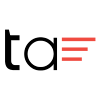-
About
- About Listly
- Community & Support
- Howto
- Chrome Extension
- Bookmarklet
- WordPress Plugin
- Listly Premium
- Privacy
- Terms
- DMCA Copyright
- © 2010-2025 Boomy Labs

 Amit Sharma
Amit Sharma
Listly by Amit Sharma
According to Statista Report 2017, the global blockchain technology market will be 2.3 billion USD in size by 2021, assuming a CAGR of 61.5%. Blockchain is proving to be one of the most promising technologies of 21st century.
Source: https://www.techaheadcorp.com/blog/blockchain-technology/

Blockchain is basically a digital ledger where data can be entered, verified and then processed further by the approval of computer nodes on a peer-to-peer network. Whether you want to enter new data, validate existing ones or delete data, a predefined number of nodes on the P2P network must validate each transaction.
The digital data is stored in blocks that are then linked together form the blockchain. To create a new block of data, any one of the nodes first needs to create a new block and then put all the new transactions in the block. This new block is appended to the existing blockchain and then broadcasted to other nodes on the network. Other nodes must verify the validity of the new transactions before it can be accepted and become part of the blockchain.
Having a P2P network implies that all users are equal – there is no server that is superior than its clients, as in the case of Internet. This gives rise to decentralized control over the data contained in the whole blockchain.
This involvement of all the nodes for all transactions ensures that there is no single point of control as well as failure. The distributed data ensures that hackers cannot hack into the blockchain from any single point. Similarly, if any one node fails, the whole blockchain would not be disrupted and it will be business as usual.
Blockchain was first implemented as Bitcoin, a digital currency design by Satoshi Nakamoto. Or rather, it was the other way round. Blockchain was invented so that digital currency could become a reality. This is the reason why many people think of blockchain as Bitcoin and find it difficult to believe that blockchain is a concept that can be taken much beyond cryptocurrencies. However, blockchain’s contribution to popularizing digital currency cannot be glossed over.
The backbone of any blockchain is the P2P network formed by nodes with huge computing capabilities. The huge computing capability is required because nodes are needed to solve complex puzzles to find new blocks or validate transactions. The moment they join the network, the blockchain is automatically downloaded on their system. There is no copy of the blockchain, the node simply shares the blockchain with other nodes. When a new block has to be created or data has to be added to an existing block, it must be done by a node. Once this new node is put out on the network, it is verified by all the nodes. This is called reconciling the transaction. The network checks itself every 10 minutes to see if any new transaction has taken place, which needs to be reconciled.
• Blockchain can be used in supply chain to verify authenticity of products being delivered.
• Smart contracts can be used to perform transactions without the need for middlemen.
• Blockchain can be used for crowdfunding where people donating can easily track if they are donations have been put to correct use.
• Securing personal identities online is one of the biggest drawbacks of current online systems. Blockchain can be used to distribute this data in a way that it becomes secure and there is no central point of hacking.
• People can store records pertaining to their achievements academically and professionally on blockchain and share with other people like prospective employers or loan managers. As it is on blockchain, the other party can easily verify the authenticity of information.
• Data that should be in public domain, like land title deeds, stock market value, etc. can be securely put on blockchain so that anyone can access and view them.
• Patient data can be shared across healthcare organizations to ensure better and more efficient care.
Most governments around the world grapple with issues of transparency, reliability and security in their various programs. All these issues can be taken care of by using blockchain to maintain information. So, governments are embracing blockchain technology to implement transparency and data security issues.
The future of blockchain technology will become self-evident when you read these numbers:

TechAhead is a global leader in mobile consulting, design, and development; with an impeccable record of successful engagements spanning across almost a decade. Sin...